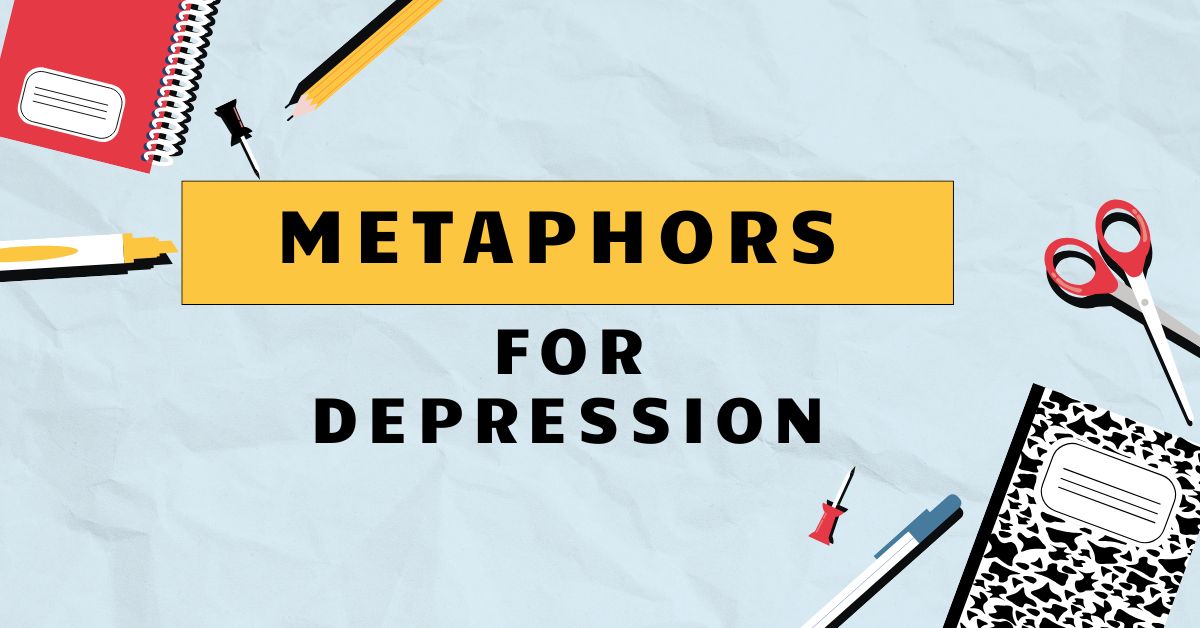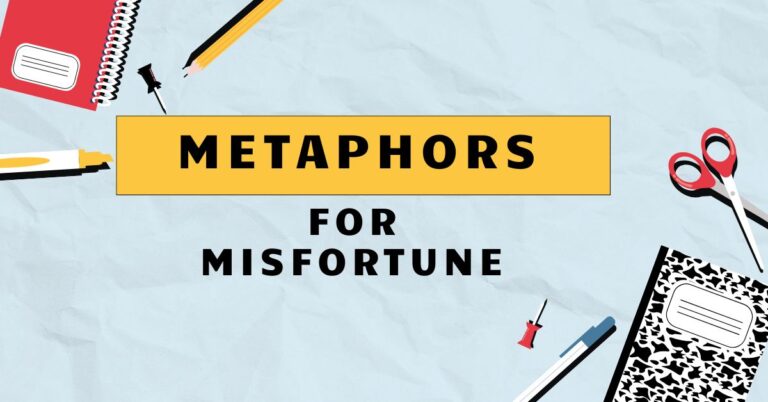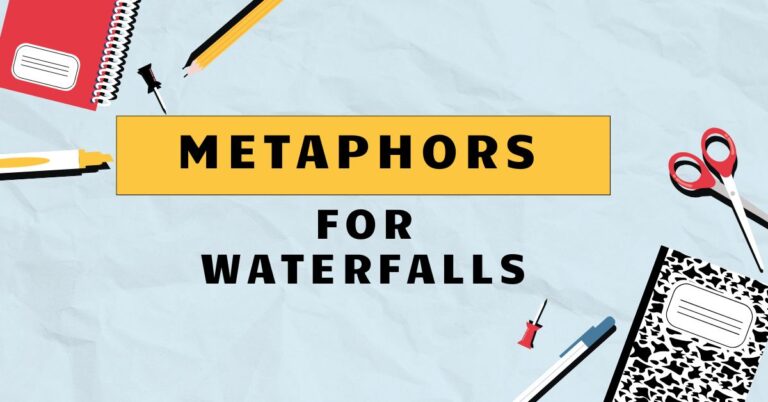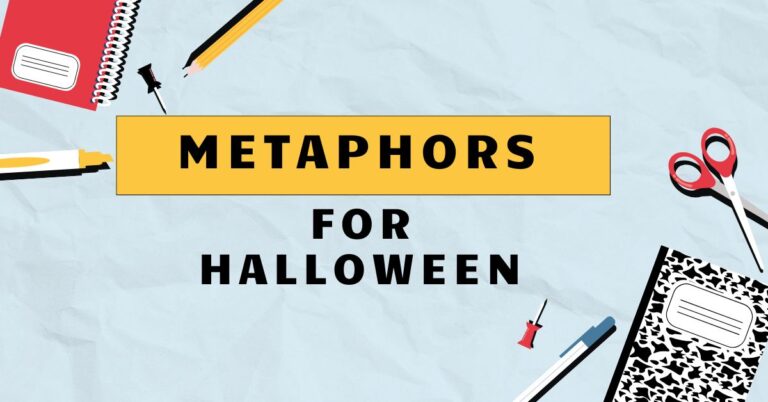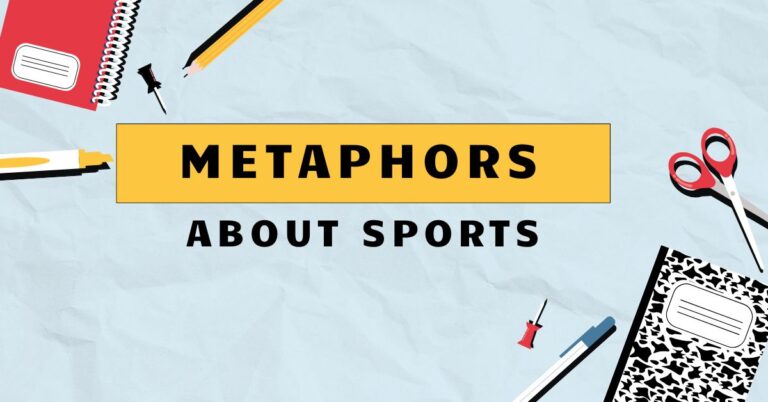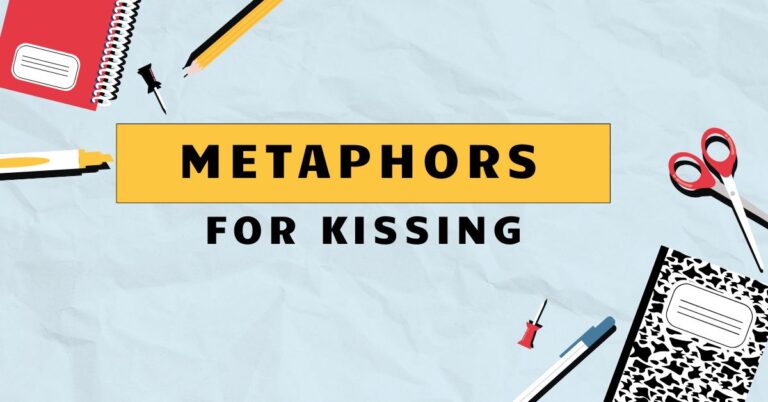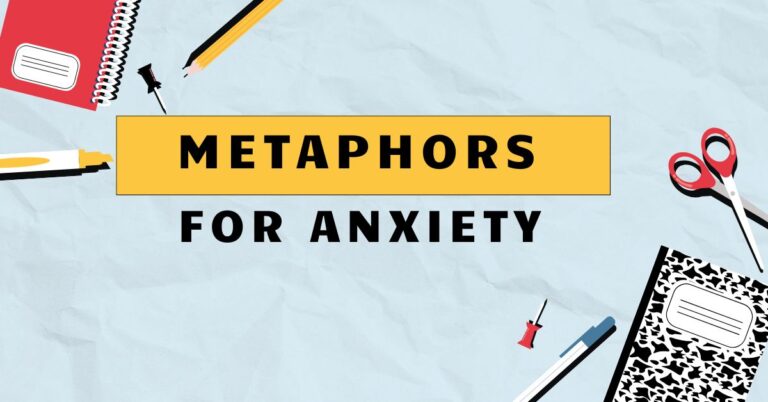43 Metaphors for Depression: Understanding & Using Figurative Language
Understanding the language of depression is crucial for both those experiencing it and those supporting them. Metaphors, in particular, offer a powerful way to express the often-ineffable feelings associated with depression.
This article delves into the world of metaphors used to describe depression, exploring their grammatical structure, various types, and effective usage. By mastering this figurative language, we can improve communication, foster empathy, and gain a deeper understanding of this complex mental health condition.
This guide is beneficial for English language learners, mental health professionals, writers, and anyone seeking to enhance their understanding of depression through the lens of language.
Table of Contents
- Introduction
- Definition of Metaphor and its Role in Describing Depression
- Structural Breakdown of Depression Metaphors
- Types or Categories of Metaphors for Depression
- Examples of Metaphors for Depression
- Usage Rules for Metaphors Describing Depression
- Common Mistakes When Using Depression Metaphors
- Practice Exercises
- Advanced Topics: Nuance and Cultural Sensitivity
- FAQ: Frequently Asked Questions
- Conclusion
Definition of Metaphor and its Role in Describing Depression
Ametaphoris a figure of speech that directly compares two unrelated things, asserting that one thing *is* another. Unlike similes, which use “like” or “as” to make a comparison, metaphors create a more implicit and powerful connection.
They operate by transferring qualities or characteristics from one concept (the source domain) to another (the target domain).
In the context of depression, metaphors serve as invaluable tools for expressing subjective experiences that are otherwise difficult to articulate. Depression is an internal state often characterized by complex emotions, cognitive distortions, and physical sensations.
Because these experiences are highly personal and abstract, metaphors provide a bridge between the inner world of the individual and the external world of shared understanding. By using metaphors, individuals can communicate the intensity, nature, and impact of their depression in a way that resonates with others.
Metaphors related to depression can be classified based on the feeling they want to convey. For example, some metaphors focus on the feeling of hopelessness and despair, while others emphasize the sense of isolation or the lack of energy.
Metaphors can also be categorized by their function, such as helping to understand the experience, validating feelings, or creating a sense of shared understanding.
Structural Breakdown of Depression Metaphors
Understanding the structural elements of a metaphor helps in both interpreting and creating effective expressions of depression. A typical metaphor consists of two key components: thetenor(or subject) and thevehicle.
The tenor is the concept being described (in this case, depression), while the vehicle is the thing it is being compared to. The connection between the tenor and vehicle is theground, the shared characteristics that make the comparison meaningful.
Consider the metaphor “Depression is a heavy cloak.” Here, “depression” is the tenor, and “a heavy cloak” is the vehicle. The ground is the shared characteristic of weightiness, oppressiveness, and the way both can hinder movement and comfort.
The effectiveness of a metaphor relies on the strength and clarity of this shared ground.
Metaphors can also be extended, developing the initial comparison with further details and imagery. An extended metaphor elaborates on the initial connection, creating a richer and more nuanced depiction of the experience.
For example, “Depression is a heavy cloak that I can’t take off, no matter how hard I try. It clings to me, weighing me down with every step.” This extended metaphor builds upon the initial image, adding layers of meaning and emotional impact.
Types or Categories of Metaphors for Depression
Metaphors for depression can be grouped into several categories based on the common themes they evoke. These categories provide a useful framework for understanding the different ways in which depression is conceptualized and expressed.
Weight and Burden Metaphors
These metaphors depict depression as a heavy load or burden that weighs the individual down, both physically and emotionally. They emphasize the feeling of being overwhelmed and unable to move forward.
Examples include: “Depression is a lead weight chained to my ankles,” “I’m carrying the weight of the world on my shoulders,” and “It’s like wading through treacle.”
Darkness and Shadow Metaphors
This category uses imagery of darkness, shadows, and dimness to convey the feelings of sadness, hopelessness, and lack of joy associated with depression. They highlight the loss of light and vitality in the individual’s life.
Examples include: “Depression is a dark cloud hanging over me,” “I’m lost in a sea of shadows,” and “Everything feels dim and muted.”
Emptiness and Void Metaphors
These metaphors focus on the sense of hollowness, emptiness, and lack of meaning that often accompany depression. They emphasize the absence of feelings, motivation, and connection.
Examples include: “I feel like an empty shell,” “There’s a void inside me that nothing can fill,” and “My life feels meaningless and hollow.”
Imprisonment and Trapped Metaphors
This category portrays depression as a form of confinement, either physical or emotional. They highlight the feeling of being trapped, restricted, and unable to escape the negative thoughts and feelings associated with the condition.
Examples include: “Depression is a prison with invisible bars,” “I feel trapped in my own mind,” and “I’m suffocating under the weight of my despair.”
Weather and Storm Metaphors
These metaphors use weather imagery, such as storms, rain, and fog, to represent the turbulent and overwhelming nature of depression. They emphasize the unpredictable and destructive impact of the condition.
Examples include: “Depression is a storm raging inside me,” “I’m drowning in a sea of sadness,” and “A thick fog has settled over my mind.”
Examples of Metaphors for Depression
Here are several examples of metaphors for depression, categorized by the themes they represent. Each category contains multiple examples to illustrate the variety of ways in which these metaphors can be expressed.
The following table provides examples of weight and burden metaphors used to describe depression. Notice how each metaphor conveys a sense of heaviness, oppression, and difficulty in moving forward.
| Category | Metaphor |
|---|---|
| Weight/Burden | Depression is a lead blanket smothering my joy. |
| Weight/Burden | I’m carrying a ton of bricks on my back, and I can’t put it down. |
| Weight/Burden | It feels like I’m wading through quicksand. |
| Weight/Burden | My soul feels like a stone in my chest. |
| Weight/Burden | This sadness is an anchor dragging me to the bottom. |
| Weight/Burden | Depression is a relentless backpack, always full. |
| Weight/Burden | I’m carrying a mountain of unspoken words. |
| Weight/Burden | It’s like wearing shoes filled with concrete. |
| Weight/Burden | My spirit feels like a deflated balloon. |
| Weight/Burden | This feeling is a heavy chain binding my feet. |
| Weight/Burden | Depression feels like a physical weight pressing down on me. |
| Weight/Burden | I’m burdened by a silent, invisible load. |
| Weight/Burden | It’s like trying to run a marathon with lead weights attached to my legs. |
| Weight/Burden | My heart feels like a heavy stone in my chest. |
| Weight/Burden | This sadness is an anchor pulling me down into the depths. |
| Weight/Burden | Depression is a crushing weight on my shoulders. |
| Weight/Burden | I’m carrying the baggage of the past, and it’s too heavy to bear. |
| Weight/Burden | It’s like swimming upstream against a powerful current. |
| Weight/Burden | My mind feels like a tangled knot that I can’t unravel. |
| Weight/Burden | This feeling is a dark cloud overshadowing everything. |
| Weight/Burden | Depression is a heavy fog that obscures my vision. |
| Weight/Burden | I’m carrying a burden of guilt and shame that I can’t shake off. |
| Weight/Burden | It’s like walking through molasses. |
| Weight/Burden | My soul feels like it’s trapped in a cage. |
| Weight/Burden | This sadness is a deep wound that never heals. |
The table below illustrates darkness and shadow metaphors. These metaphors often convey a sense of hopelessness and lack of light or joy.
They can be particularly effective in expressing the isolating nature of depression.
| Category | Metaphor |
|---|---|
| Darkness/Shadow | Depression is a long, dark night with no end in sight. |
| Darkness/Shadow | I’m living in the shadows, unable to see the light. |
| Darkness/Shadow | Everything feels gray and muted, like a faded photograph. |
| Darkness/Shadow | My mind is a dark and stormy sea. |
| Darkness/Shadow | The world is a dim and lifeless place. |
| Darkness/Shadow | Depression is a shadow that follows me everywhere. |
| Darkness/Shadow | I’m lost in a labyrinth of darkness. |
| Darkness/Shadow | It’s like living in a perpetual twilight. |
| Darkness/Shadow | My spirit feels like a dying ember. |
| Darkness/Shadow | This feeling is a black hole sucking all the joy from my life. |
| Darkness/Shadow | Depression is a veil of darkness that obscures my vision. |
| Darkness/Shadow | I’m surrounded by a sea of shadows, and I can’t find my way out. |
| Darkness/Shadow | It’s like living in a world of monochrome. |
| Darkness/Shadow | My heart feels like a cold and empty space. |
| Darkness/Shadow | This sadness is a dark cloud hanging over my head. |
| Darkness/Shadow | Depression is a thick fog that prevents me from seeing clearly. |
| Darkness/Shadow | I’m trapped in a nightmare from which I can’t wake up. |
| Darkness/Shadow | It’s like living in a world without color or sound. |
| Darkness/Shadow | My mind feels like a haunted house. |
| Darkness/Shadow | This feeling is a bottomless pit of despair. |
| Darkness/Shadow | Depression is a dark curtain that separates me from the world. |
| Darkness/Shadow | I’m walking through life in a perpetual state of dusk. |
| Darkness/Shadow | It’s like living in a world where the sun never shines. |
| Darkness/Shadow | My soul feels like it’s shrouded in darkness. |
| Darkness/Shadow | This sadness is a heavy shadow that follows me everywhere. |
The following examples illustrate metaphors for emptiness and void. These metaphors highlight the sense of hollowness, lack of meaning, and absence of feeling that often accompany depression.
| Category | Metaphor |
|---|---|
| Emptiness/Void | Depression is an empty room inside me that echoes with silence. |
| Emptiness/Void | I feel like a shell, hollow and devoid of life. |
| Emptiness/Void | There’s a gaping hole in my heart that nothing can fill. |
| Emptiness/Void | My life feels meaningless and without purpose. |
| Emptiness/Void | I’m just going through the motions, without any real feeling. |
| Emptiness/Void | Depression is a void that consumes everything in its path. |
| Emptiness/Void | I feel like a ghost, haunting my own life. |
| Emptiness/Void | It’s like living in a world without taste or smell. |
| Emptiness/Void | My spirit feels like a withered flower. |
| Emptiness/Void | This feeling is a black hole swallowing my emotions. |
| Emptiness/Void | Depression is an absence of joy, a vacuum of emotion. |
| Emptiness/Void | I’m an empty vessel, waiting to be filled. |
| Emptiness/Void | It’s like living in a world without meaning or significance. |
| Emptiness/Void | My heart feels like a barren wasteland. |
| Emptiness/Void | This sadness is a void that can never be filled. |
| Emptiness/Void | Depression is a hollow echo in the chambers of my heart. |
| Emptiness/Void | I’m a blank canvas, waiting for someone to paint me with life. |
| Emptiness/Void | It’s like living in a world without connection or purpose. |
| Emptiness/Void | My mind feels like an empty shell. |
| Emptiness/Void | This feeling is a deep emptiness that gnaws at my soul. |
| Emptiness/Void | Depression is a vacant stare into the abyss. |
| Emptiness/Void | I’m a ghost of my former self, wandering through life without purpose. |
| Emptiness/Void | It’s like living in a world where everything is gray and lifeless. |
| Emptiness/Void | My soul feels like it’s been emptied out. |
| Emptiness/Void | This sadness is a void that consumes everything in its path. |
This table presents examples of imprisonment and trapped metaphors. They emphasize the feeling of being confined, restricted, and unable to escape the negative thoughts and feelings associated with depression.
| Category | Metaphor |
|---|---|
| Imprisonment/Trapped | Depression is a cage built of my own thoughts. |
| Imprisonment/Trapped | I feel trapped in my own mind, unable to escape the negativity. |
| Imprisonment/Trapped | It’s like being buried alive, suffocating under the weight of despair. |
| Imprisonment/Trapped | My mind is a prison, and I’m serving a life sentence. |
| Imprisonment/Trapped | I’m trapped in a cycle of negative thoughts and feelings. |
| Imprisonment/Trapped | Depression is a labyrinth with no exit. |
| Imprisonment/Trapped | I feel like a bird with clipped wings, unable to fly. |
| Imprisonment/Trapped | It’s like being chained to a wall, unable to move freely. |
| Imprisonment/Trapped | My spirit feels like it’s confined to a small, dark room. |
| Imprisonment/Trapped | This feeling is a trap from which I can’t escape. |
| Imprisonment/Trapped | Depression is a prison of isolation. |
| Imprisonment/Trapped | I’m a prisoner of my own thoughts and emotions. |
| Imprisonment/Trapped | It’s like being trapped in a nightmare that never ends. |
| Imprisonment/Trapped | My heart feels like it’s locked away behind bars. |
| Imprisonment/Trapped | This sadness is a cage that confines my spirit. |
| Imprisonment/Trapped | Depression is a web of despair that ensnares me. |
| Imprisonment/Trapped | I’m trapped in a vortex of negativity. |
| Imprisonment/Trapped | It’s like being buried alive under a mountain of sadness. |
| Imprisonment/Trapped | My mind feels like a haunted house, filled with ghosts of the past. |
| Imprisonment/Trapped | This feeling is a dark abyss from which I can’t climb out. |
| Imprisonment/Trapped | Depression is a solitary confinement in my own mind. |
| Imprisonment/Trapped | I’m a prisoner in my own body, unable to experience joy or happiness. |
| Imprisonment/Trapped | It’s like being trapped in a maze with no way out. |
| Imprisonment/Trapped | My soul feels like it’s been locked away in a dark, forgotten corner. |
| Imprisonment/Trapped | This sadness is a heavy chain that binds me to the ground. |
The table below offers examples of weather and storm metaphors. They emphasize the turbulent and overwhelming nature of depression, highlighting its unpredictable and destructive impact.
| Category | Metaphor |
|---|---|
| Weather/Storm | Depression is a storm raging inside me, tearing me apart. |
| Weather/Storm | I’m drowning in a sea of sadness, struggling to stay afloat. |
| Weather/Storm | A thick fog has settled over my mind, obscuring my thoughts. |
| Weather/Storm | My mind is a turbulent ocean, tossed by waves of despair. |
| Weather/Storm | The world is a cold and rainy place, devoid of warmth and sunshine. |
| Weather/Storm | Depression is a relentless downpour that never ends. |
| Weather/Storm | I feel like a ship lost at sea in a violent storm. |
| Weather/Storm | It’s like being caught in a hurricane of emotions. |
| Weather/Storm | My spirit feels like it’s been battered by a storm. |
| Weather/Storm | This feeling is a tsunami of sadness that washes over me. |
| Weather/Storm | Depression is a dark cloud that hovers over my life. |
| Weather/Storm | I’m weathering a storm inside my own head. |
| Weather/Storm | It’s like living in a world where the weather is always bleak and stormy. |
| Weather/Storm | My heart feels like it’s been frozen by a cold wind. |
| Weather/Storm | This sadness is a flood that threatens to drown me. |
| Weather/Storm | Depression is a blizzard that numbs my senses. |
| Weather/Storm | I’m lost in a fog of despair and confusion. |
| Weather/Storm | It’s like being caught in a whirlwind of negative thoughts. |
| Weather/Storm | My mind feels like a battlefield, ravaged by emotional storms. |
| Weather/Storm | This feeling is a tempest that never subsides. |
| Weather/Storm | Depression is a relentless storm cloud hanging overhead. |
| Weather/Storm | I’m caught in a downpour of negative thoughts and emotions. |
| Weather/Storm | It’s like living in a world where the sun never breaks through the clouds. |
| Weather/Storm | My soul feels like it’s been chilled to the bone by a freezing wind. |
| Weather/Storm | This sadness is a torrential rain that washes away all hope. |
Usage Rules for Metaphors Describing Depression
When using metaphors to describe depression, it is essential to adhere to certain rules to ensure clarity, sensitivity, and effectiveness. First, ensure thevehicleis easily understandable and relatable.
The more abstract or obscure the vehicle, the less effective the metaphor will be.
Second, be mindful of theemotional impactof your metaphors. Depression is a sensitive topic, and it is crucial to avoid metaphors that are overly dramatic, insensitive, or trivializing.
For example, avoid metaphors that compare depression to a minor inconvenience or a fleeting emotion.
Third, consider thecontextin which the metaphor is being used. The appropriateness of a metaphor may vary depending on the audience, the purpose of the communication, and the overall tone.
For example, a metaphor that is suitable for a personal journal may not be appropriate for a formal presentation.
Fourth, strive fororiginalityandfreshness. While common metaphors can be effective, overused metaphors can become clichéd and lose their impact.
Try to create metaphors that are unique and imaginative, while still remaining clear and relatable.
Finally, be consistent with your metaphors. If you are using an extended metaphor, ensure that the different parts of the metaphor are consistent with each other and that they create a cohesive and meaningful image.
Common Mistakes When Using Depression Metaphors
Several common mistakes can undermine the effectiveness of metaphors used to describe depression. One frequent error is usingclichéd or overused metaphors.
Examples: “Depression is a dark cloud” or “Depression is a black dog.” While these metaphors are understandable, they lack originality and emotional impact.
Another mistake is using metaphors that are insensitive or trivializing. For example, comparing depression to “a bad day” or “the Monday blues” minimizes the seriousness of the condition and can be offensive to those who are struggling with it.
A further error is using metaphors that areunclear or confusing. If the vehicle is too abstract or unrelated to the tenor, the metaphor will fail to communicate the intended meaning.
For example, “Depression is a quantum entanglement” may be technically accurate but inaccessible to most audiences.
Finally, mixing metaphors can create a confusing and incoherent image. For example, “Depression is a heavy cloak that’s also a raging storm” combines two different metaphors that don’t logically fit together.
Here are some examples of common mistakes and corrections:
| Incorrect | Correct | Explanation |
|---|---|---|
| Depression is a dark cloud. | Depression is a relentless fog, obscuring my path forward. | The corrected version is more specific and evocative. |
| Depression is just the Monday blues. | Depression is a deep and persistent ache that permeates every aspect of my life. | The corrected version is more sensitive and accurate. |
| Depression is a quantum entanglement. | Depression is a tangled web of thoughts and emotions that I can’t seem to unravel. | The corrected version is more accessible and relatable. |
| Depression is a heavy cloak that’s also a raging storm. | Depression is a heavy cloak that weighs me down and isolates me from the world. | The corrected version uses a single, consistent metaphor. |
| Depression is like a broken pencil. | Depression feels like a constant battle against myself. | The metaphor is too simplistic and doesn’t accurately represent the complexity of depression. |
| Depression is just a phase. | Depression is a persistent shadow that darkens my days. | This trivializes the experience of depression. |
| Depression is like a roller coaster. | Depression is a deep, dark pit that I can’t climb out of. | This is too simplistic and doesn’t convey the depth of the experience. |
Practice Exercises
Test your understanding of metaphors for depression with these exercises. For each question, identify the type of metaphor used and suggest an alternative metaphor that conveys a similar meaning.
| Question | Answer |
|---|---|
| 1. Identify the type of metaphor: “Depression is a heavy weight on my chest.” | Weight/Burden. Alternative: “Depression is like carrying a backpack full of rocks.” |
| 2. Identify the type of metaphor: “I’m lost in a sea of despair.” | Weather/Storm. Alternative: “I’m drowning in a river of sadness.” |
| 3. Identify the type of metaphor: “My life feels empty and hollow.” | Emptiness/Void. Alternative: “I feel like an empty shell, devoid of feeling.” |
| 4. Identify the type of metaphor: “Depression is a prison with no escape.” | Imprisonment/Trapped. Alternative: “I’m trapped in a cage of my own thoughts.” |
| 5. Identify the type of metaphor: “A dark cloud hangs over my head.” | Darkness/Shadow. Alternative: “A shadow of sadness follows me everywhere.” |
| 6. Identify the type of metaphor: “Depression is a constant uphill battle.” | Weight/Burden. Alternative: “Depression is like climbing a never-ending staircase.” |
| 7. Identify the type of metaphor: “I feel like I’m suffocating in a fog of despair.” | Weather/Storm. Alternative: “I’m lost in a dense mist of hopelessness.” |
| 8. Identify the type of metaphor: “My spirit feels like an empty well.” | Emptiness/Void. Alternative: “I feel like a dried-up riverbed, devoid of life.” |
| 9. Identify the type of metaphor: “Depression is a labyrinth with no exit.” | Imprisonment/Trapped. Alternative: “I’m trapped in a maze of negative thoughts.” |
| 10. Identify the type of metaphor: “The world feels gray and lifeless.” | Darkness/Shadow. Alternative: “The world has lost its color and vibrancy.” |
Exercise 2: Fill in the blanks with appropriate metaphors:
| Question | Answer |
|---|---|
| 1. Depression is like ______, making it hard to move forward. | quicksand |
| 2. I feel like I’m ______ in a sea of sadness. | drowning |
| 3. My heart feels like ______, cold and empty. | a stone |
| 4. Depression is ______, trapping me in my own mind. | a prison |
| 5. The world seems to be covered in ______, obscuring the joy. | a dark veil |
| 6. Depression is a ______ that keeps me from enjoying life. | heavy chain |
| 7. I feel like I am ______ in a never-ending storm. | adrift |
| 8. My soul feels like ______, devoid of any warmth. | a frozen wasteland |
| 9. Depression is like being ______ in a dark room. | locked up |
| 10. The future seems like ______, with no hope in sight. | a long, dark tunnel |
Exercise 3: Create your own metaphors:
Create five original metaphors for depression, using each of the categories discussed in this article (Weight/Burden, Darkness/Shadow, Emptiness/Void, Imprisonment/Trapped, and Weather/Storm).
- Weight/Burden: (Example) Depression is like carrying a boulder uphill, constantly fighting against gravity.
- Darkness/Shadow: (Example) Depression is a perpetual eclipse, blocking out the sun and leaving me in darkness.
- Emptiness/Void: (Example) Depression is like a black hole in my soul, sucking away all the light and energy.
- Imprisonment/Trapped: (Example) Depression is like being buried alive, unable to breathe or escape the darkness.
- Weather/Storm: (Example) Depression is like a relentless blizzard, freezing my emotions and leaving me numb.
Advanced Topics: Nuance and Cultural Sensitivity
Beyond the basic understanding of metaphors for depression, advanced learners should also consider the nuances and cultural sensitivities involved in their usage. The same metaphor can have different connotations in different cultures
.
For example, metaphors involving darkness may be particularly stigmatizing in cultures where darkness is associated with evil or misfortune.
It’s also important to recognize that individual experiences of depression can vary widely. A metaphor that resonates with one person may not resonate with another.
Therefore, it’s essential to be flexible and adaptable in your use of metaphors, and to be open to feedback from others.
Furthermore, be aware of the potential for metaphors to perpetuate harmful stereotypes or misconceptions about depression. Avoid metaphors that suggest that depression is a sign of weakness, a personal failing, or something that can be easily overcome with willpower.
Finally, consider the power dynamics involved in the use of metaphors. If you are not someone who has personally experienced depression, be mindful of the potential for your metaphors to be perceived as insensitive or dismissive.
It’s often best to listen to and amplify the voices of those who have lived experience with depression, rather than imposing your own interpretations.
FAQ: Frequently Asked Questions
Conclusion
Metaphors are powerful tools for understanding and communicating the complex experience of depression. By understanding the structure, types, and usage rules of metaphors, we can use them effectively to foster empathy, promote understanding, and validate the experiences of those who are struggling with depression.
However, it is essential to use metaphors with sensitivity, awareness, and a willingness to learn from others. With careful consideration, metaphors can serve as a bridge between the inner world of depression and the external world of shared understanding.

